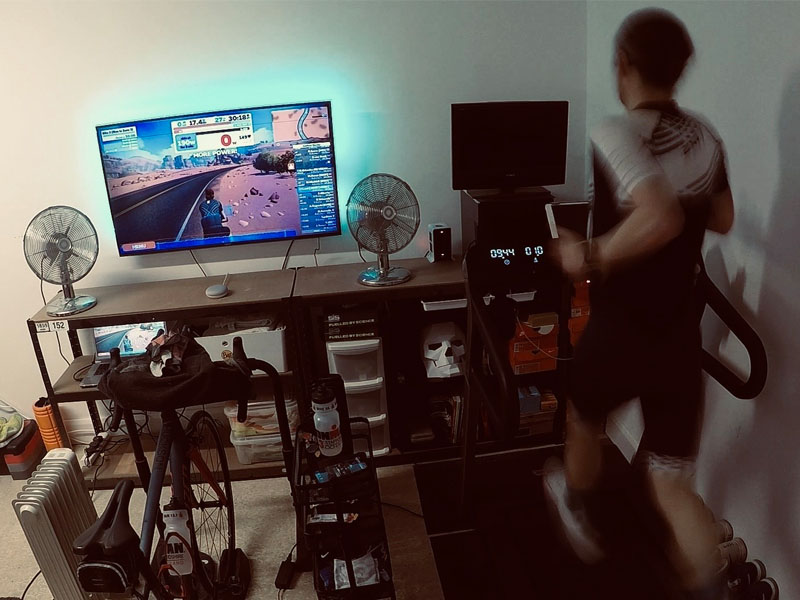The Personal Connection
Lee Twycross, Senior Industrial Design Manager
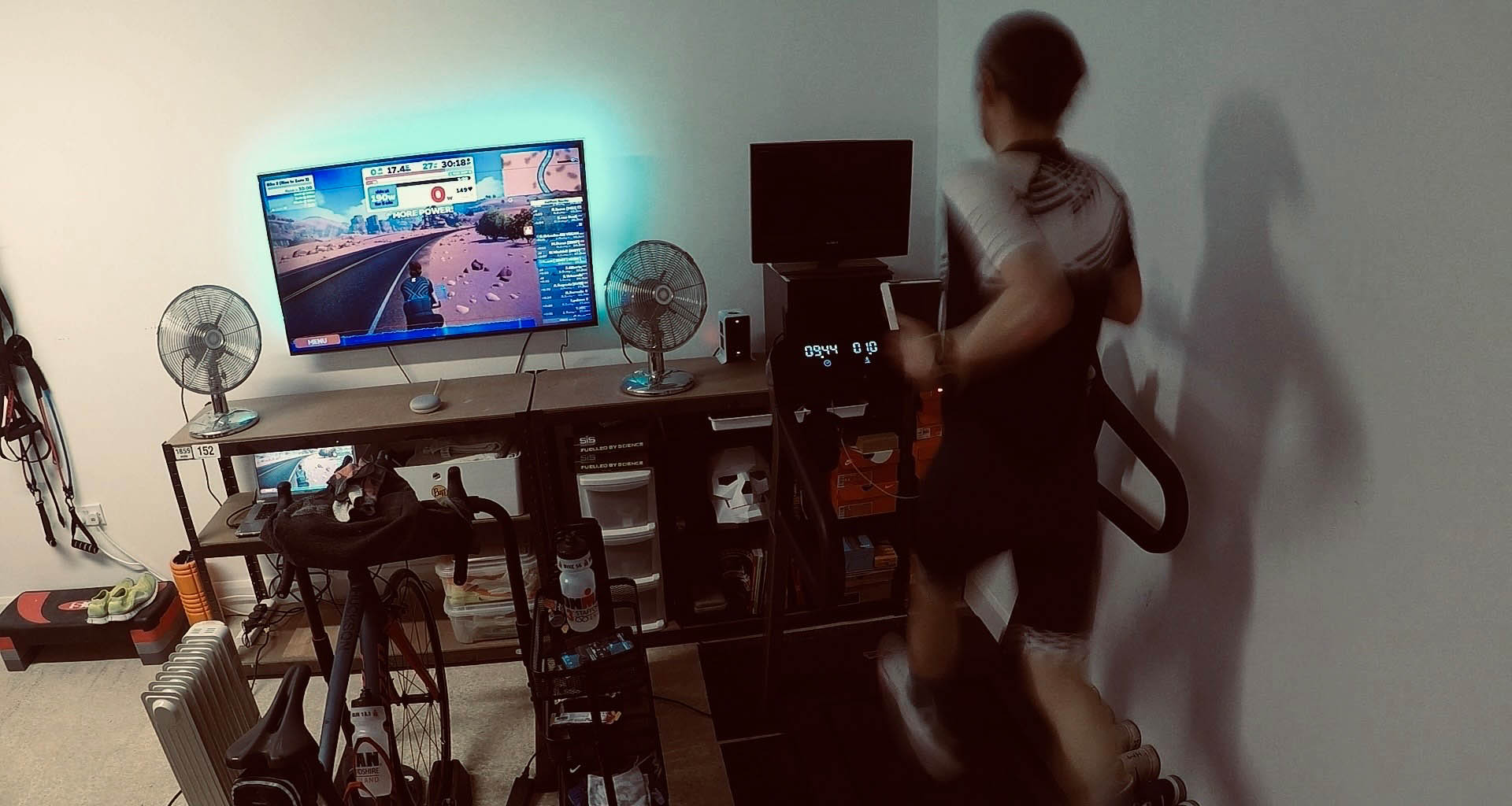
The expectations of our fitness services have skyrocketed to a hyper-personalised high. With so many different new user types, personas and varied attitudes towards fitness, the one size fits all approach doesn’t fit all. The demand and market desire for personalised experiences are expanding because we are constantly seeking more customisable services in every area of our lives. In this article, we discuss a very relevant trend showcased by many of the exhibitors; how companies are implementing sustainability into their brand values.
The holy grail for fitness is a perfectly tailored, linear journey. A journey that curates personalised solutions across each of the previously identified zones; Mindset, Movement, Motivation & Map. It’s one without failure and a fast-tracked guaranteed outcome. Although still not assured, this type of service is reserved for professional athletes and reliant on years of trial and error or expensive one to one coaching, but by exploiting advances in genetic testing and more accessible biological technologies, can we begin to unlock the secrets of how our bodies work, and speed up the process and inch closer to that summer sixpack?
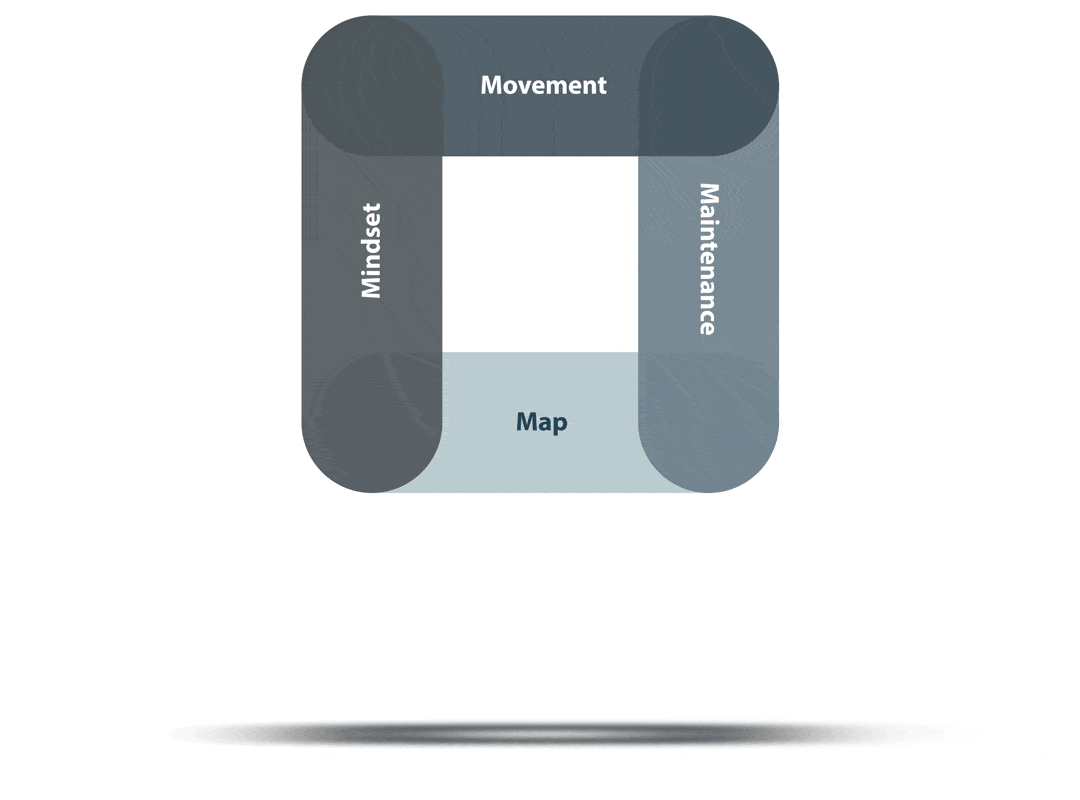


“Having a positive mental attitude and mental clarity is a fundamental part of a healthy mindset and essential to a successful fitness journey”
Wellness starts with a positive mindset
The brain is a highly complex organ and is already hyper-personalised, but we know it can be improved through learning and can be trained like our bodies. Mendi is a new type of neurological wearable device that allows the user to control a game with their brain to improve mental health.Having a positive mental attitude and mental clarity is a fundamental part of a healthy mindset and essential to a successful fitness journey. It is the foundation that everything else is built on so having the ability to personalise and improve how our brain functions could be a major breakthrough for those users that often fail at the first hurdle.

Image: Mendi is a next generation brain training tool to improve mental health
DNA guided Movements
Home DNA testing kits have been readily available for some years and aim to empower fitness fanatics with an increased awareness of their bodies, optimise performance and reach the ultimate body composition. However, current DNA tests still rely on a standardised methodology. The results are still bespoke to us, but they still only offer a general overview as to why a genetic marker is an advantage or disadvantage in certain circumstances. The challenge for DNA focussed fitness is, humans, share 99.9% of our genome, so these tests have to correctly identify and translate the remaining 0.1% which in itself is made up of millions of different combinations of genetic code. DNA fitness still has a leading role in the hyper-personalised story to unlocking our potential, but how the science and commercialisation of the information is presented back to us still has a way to go.

“Commercialisation of genomics is going to change the lives of the vast majority of the people on Earth. The last trillion-dollar industry was built on computer code. The next will be built on genetic code.” Alec Ross, author, the industries of the future
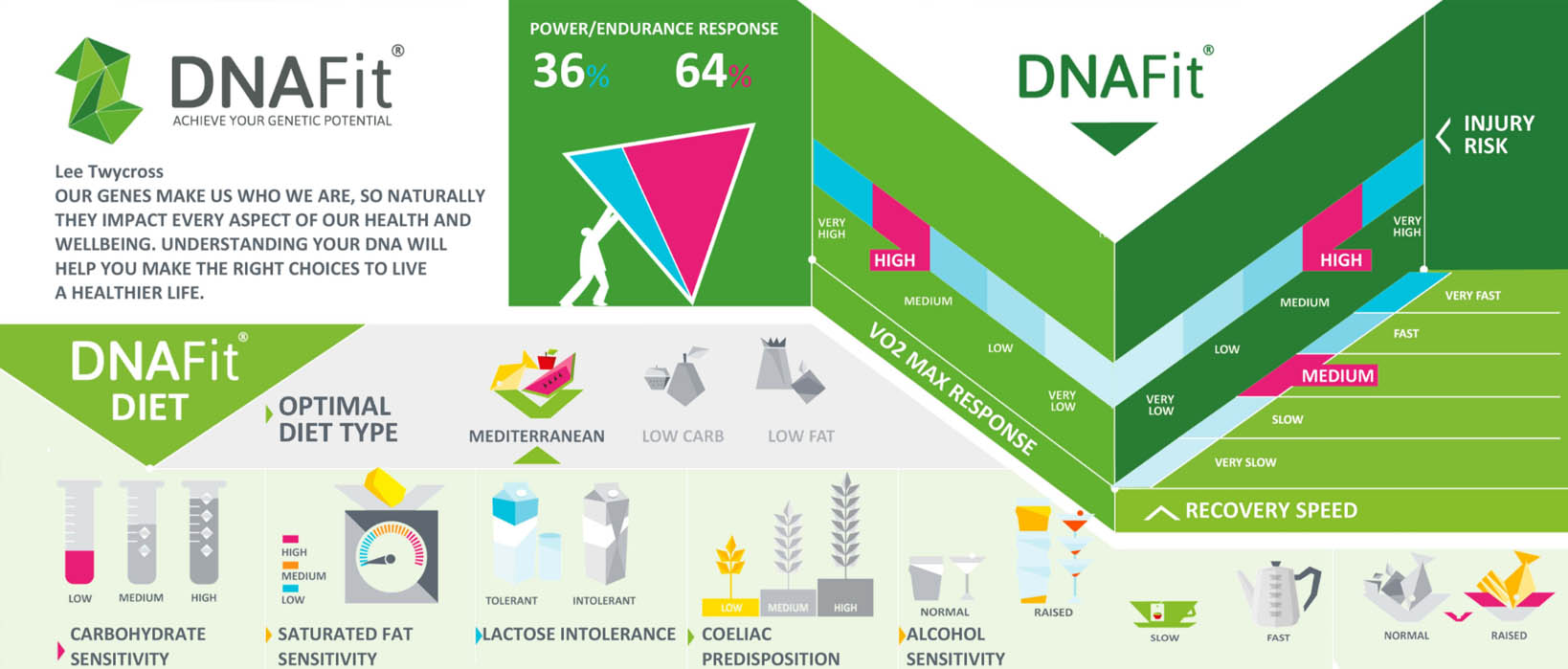
Image: DNA Fit promise a smarter, easier and more effective solution to health and fitness, entirely unique to your DNA profile
Real-time Maintenance
Fitness trackers and wearables are about to be supercharged with hyper-personalised data. As categories expand and merge, advances in healthcare technology will pave the way for a new breed of real-time monitoring devices. Unlike current wearables which capture, record and relay data post activity, these next-generation Ai powered monitors allow the user to react in real-time by analysing biometric data on the go.
Vitascale™ have developed a groundbreaking breath analysis platform that can be used across multiple wellbeing scenarios ranging from diet to sports performance. Using its disruptive sensor technology, Vitapace™ improves training performance and efficiency by providing precise, real-time feedback through an advanced Ai coach, this guides the user to the optimal training intensities.
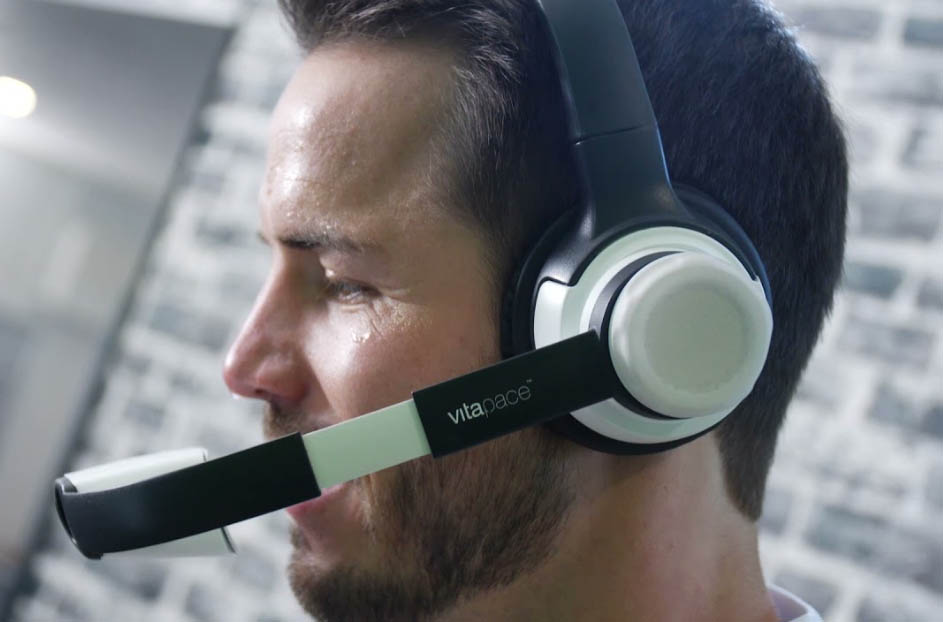
Image: VITAPACE™ offers efficient performance and fat burning based on breath analysis
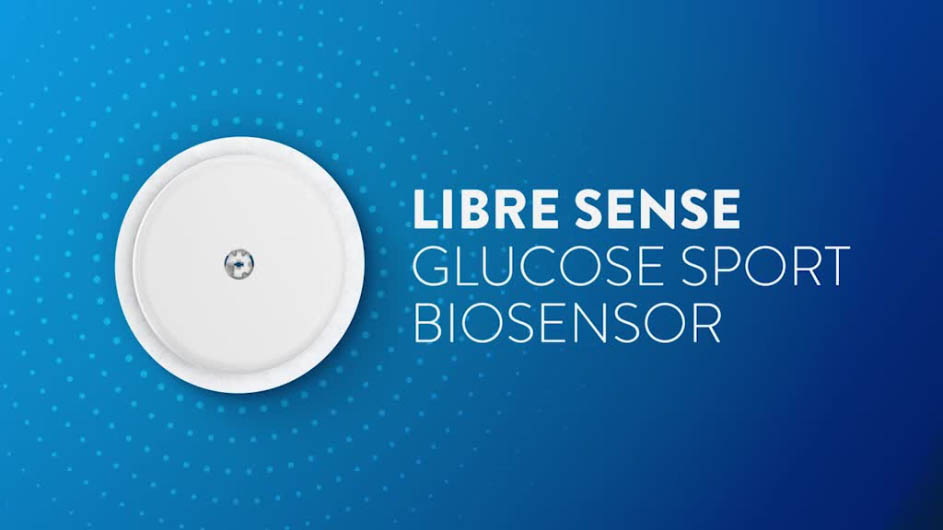
Image: The Libre Sense by Abbott is designed for athletes without diabetes to monitor their glucose levels
Understanding what and when to eat during exercise has always been a challenge for most fitness enthusiasts and amateur athletes. Continuous glucose monitoring (CGM) is not a new concept, but Abbott is changing the meaning of this space by going beyond just diabetes management and expanding the technology for use in the fitness arena. Used in conjunction with a Bluetooth connected smartphone app, these small sensors monitor glucose in real-time to help athletes know what to consume and when, not only to improve performance, but also the recovery of fatigued muscles.
Mapping the fitness Metaverse
With a hyper-personalised eye on the future, all-encompassing wellness services will grow and evolve as supporting technologies accelerate. Businesses will continue to innovate and fill the voids that new market shifts create and enter into all-new emerging spaces of opportunity that will feel they have been created just for us.
Before Covid, our homes and environments played a minor role in our fitness journeys, but homes are getting smarter and we’re beginning to explore new ways that our surroundings can benefit our health. With tech powerhouses such as Meta showcasing new thinking into future connected fitness scenarios using VR and augmented reality, we can start to imagine the merging of our homes and fitness services into a normal, fully integrated lifestyle solution.
Over the past decade, wearable technology has normalised biometric data tracking, and although these pioneering products captured limited, standalone data, they have undeniably paved the way for the latest generation of fitness equipment and digital platforms. Data collection and analysis continually progresses along with the quality of actionable insights they gather. Combine this with the rise of the smart home, boundaries between our physical and mental states will continue to converge, and as they overlap, so will our acceptance of new technology.
We will see our homes and our environments augmented by both our physical and mental wellbeing through real-time, DNA based wearables and autonomous in-home sensors. The power of personalised data will not only give more control over our surroundings, but it will also enable us to better understand ourselves to make essential changes in our lives to meet our goals. Whether that be through improving our quality of sleep, atmospheric lighting, infused water, or another unexpected controllable variable, these informed choices could improve our chances of simply sticking to that six-pack diet or beating that 5K PB.
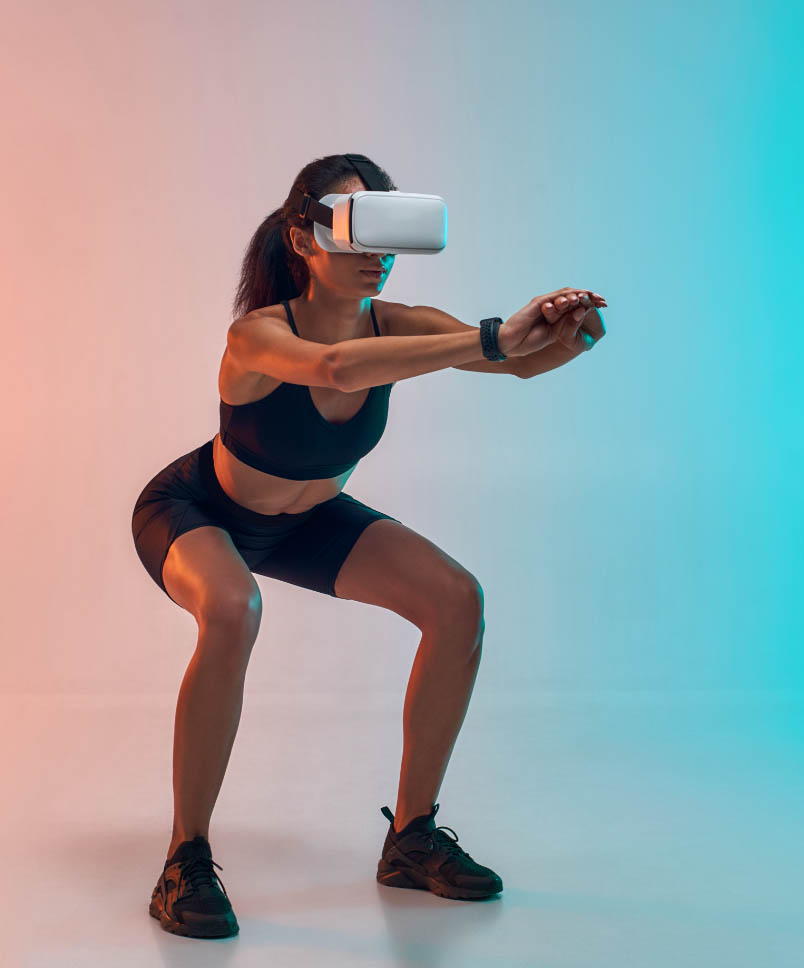
Image: Virtual and augmented reality will become commonplace in the smart home of the future
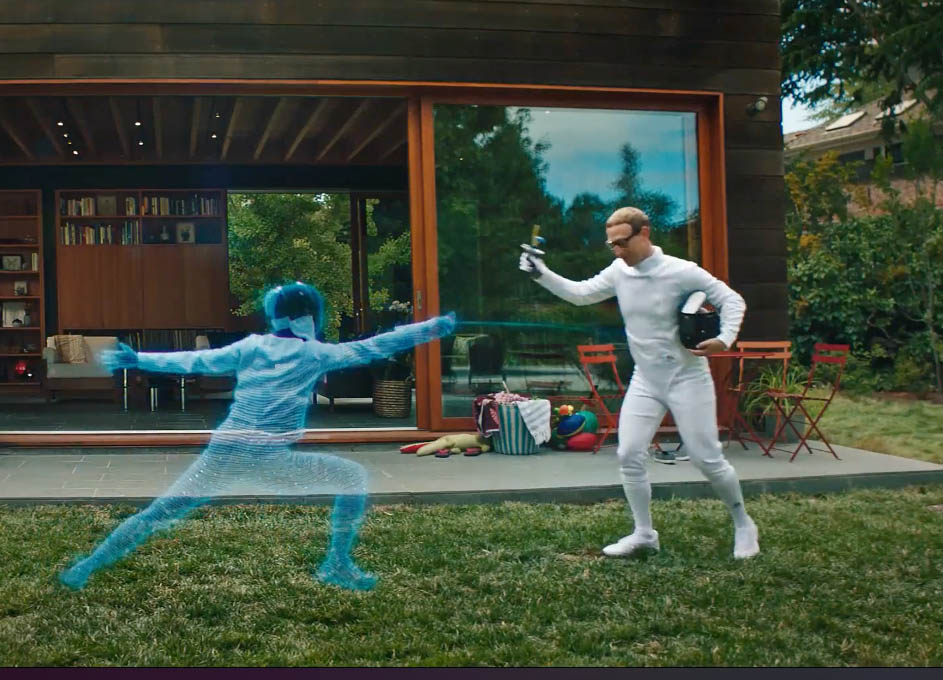
Image: Meta is developing and investing in new technologies to allow us to connect in new ways
The final connection
Unfortunately, that magic pill or secret scheme is still out of reach. We can not expect science and technology to solve all our health and fitness problems, we still have to make that mental leap into the challenge and invest the time and energy. We still have to connect the dots.
Hyper personalised fitness is just that, hyper-personalised. Each point of the journey will be made up of ever-changing variables, but technology will be a key enabler to guide us and give us subtle nudges along the way. Both DNA and Ai will be pivotal in the future of our wellness but it will not be our destiny. DNA will form the foundations of the experience whilst real-time monitoring Ai algorithms will figure out what works best for us. We can then decide if we choose to listen.
Unfortunately, that magic pill or secret scheme is still out of reach. We can not expect science and technology to solve all our health and fitness problems, we still have to make that mental leap into the challenge and invest the time and energy. We still have to connect the dots.
We are now entering what has been defined as the ‘fourth age’. A connected world where science fiction becomes science fact. We will see technology hasten throughout every touchpoint of our lives. Virtual and augmented reality will be commonplace in the home and empathetic Ai systems will take away some of the monotonous tasks with habit building algorithms, whilst conscious computing will help us with daily decisions to make us more productive. In theory, we will become a more efficient species in every aspect, we will lead happier, healthier lives and be self-sufficient to minimise our impact on the planet. This may feel like a pipe dream to some, but that virtual Zumba class or annoying buzz on your wrist to tell you to move is just the opening chapter for connected fitness.
Lee Twycross is a Senior Industrial Design Manager at Recipe Design.
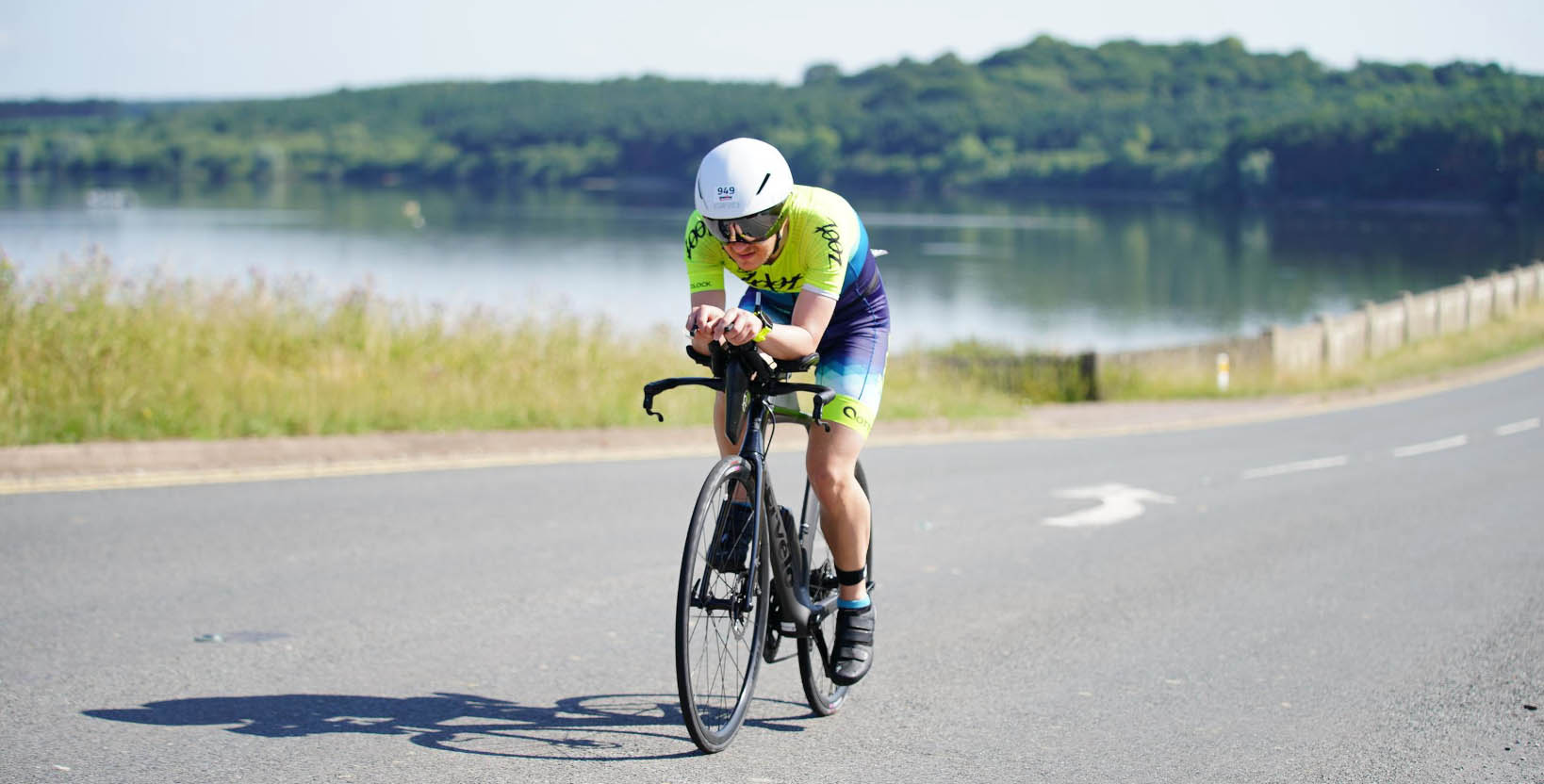
With a meticulous eye for detail and a wealth of knowledge working across multidisciplined project teams, Lee brings extensive experience to brands looking to implement conceptual thinking into tangible, consumer focused product and packaging solutions.
Fully immersed in the connected fitness lifestyle, Lee offers a unique perspective as both a designer and endurance sports enthusiast. Currently training for and racing long course triathlons as part of team Zoot Europe, he can be found tracking his own journey at the pool, on his bike or out running.
This article was first published in December 2021
Related
Creating opportunity in Connected Fitness
Whether it’s trying to lose some of that Covid weight or a prescribed healthcare necessity, no matter the reason, that person out running in the cold and dark is on a journey driven by a single goal to succeed.
